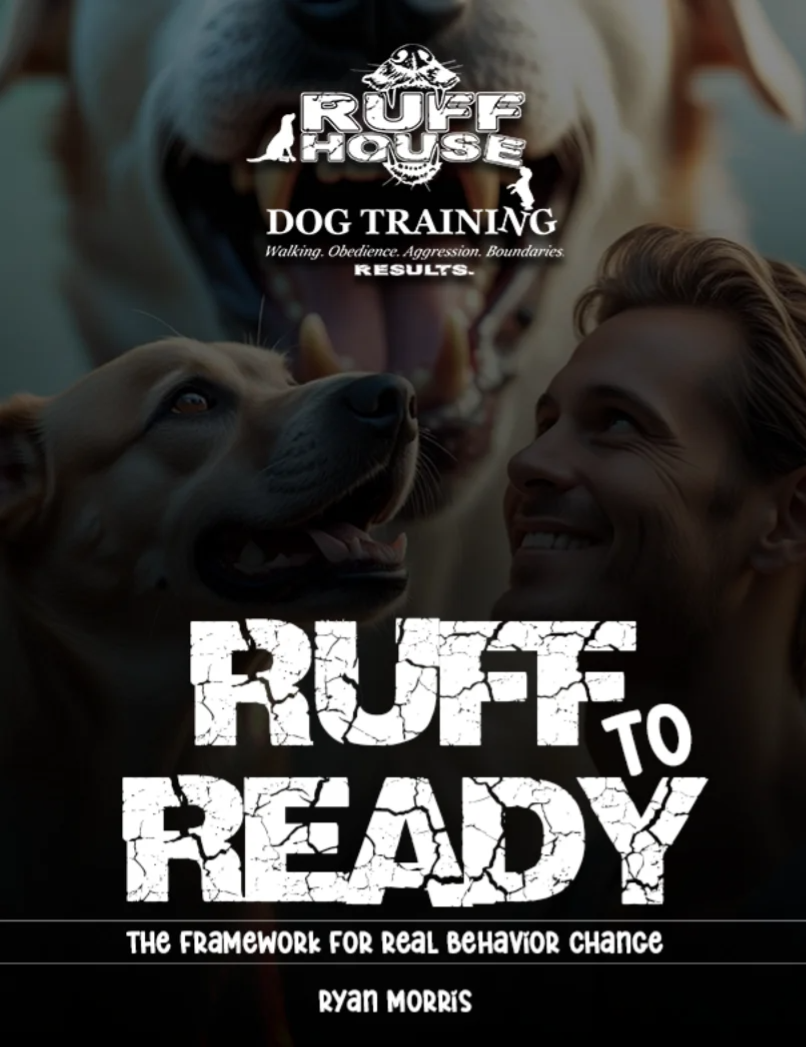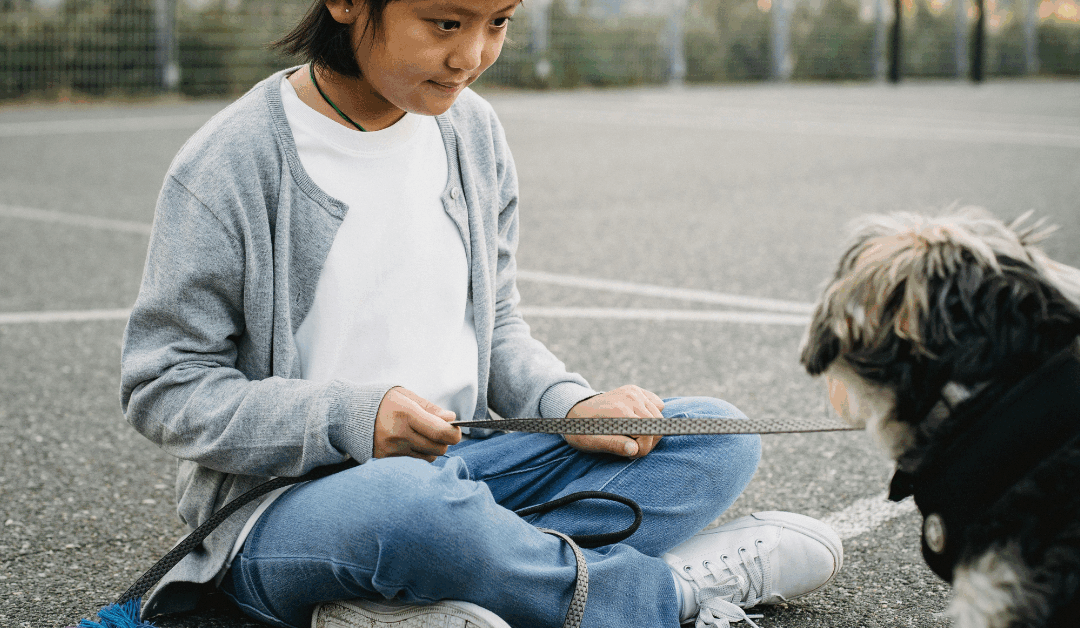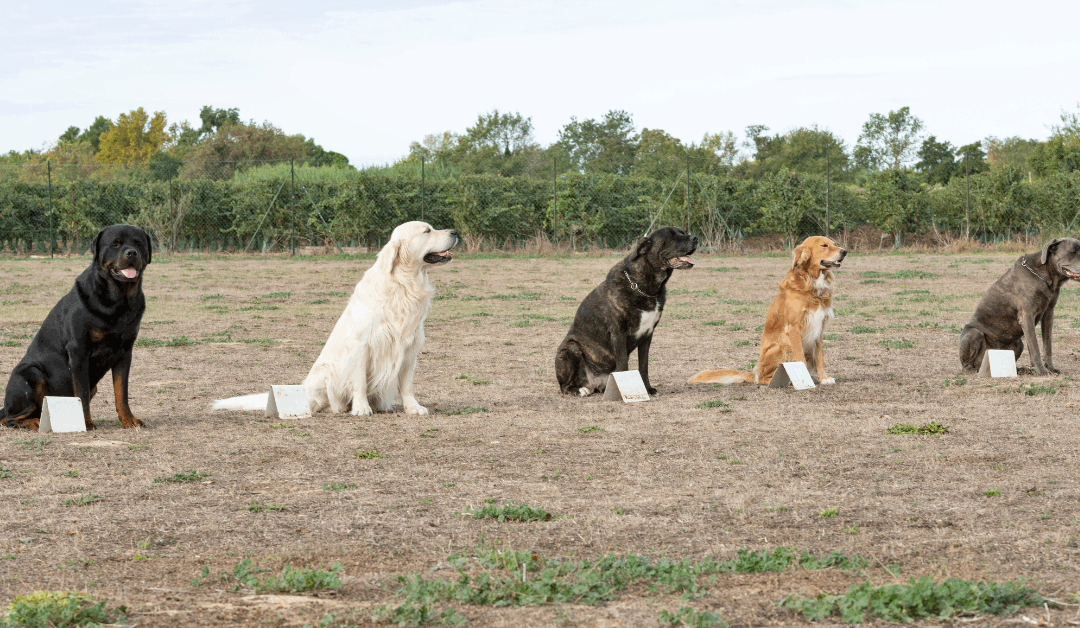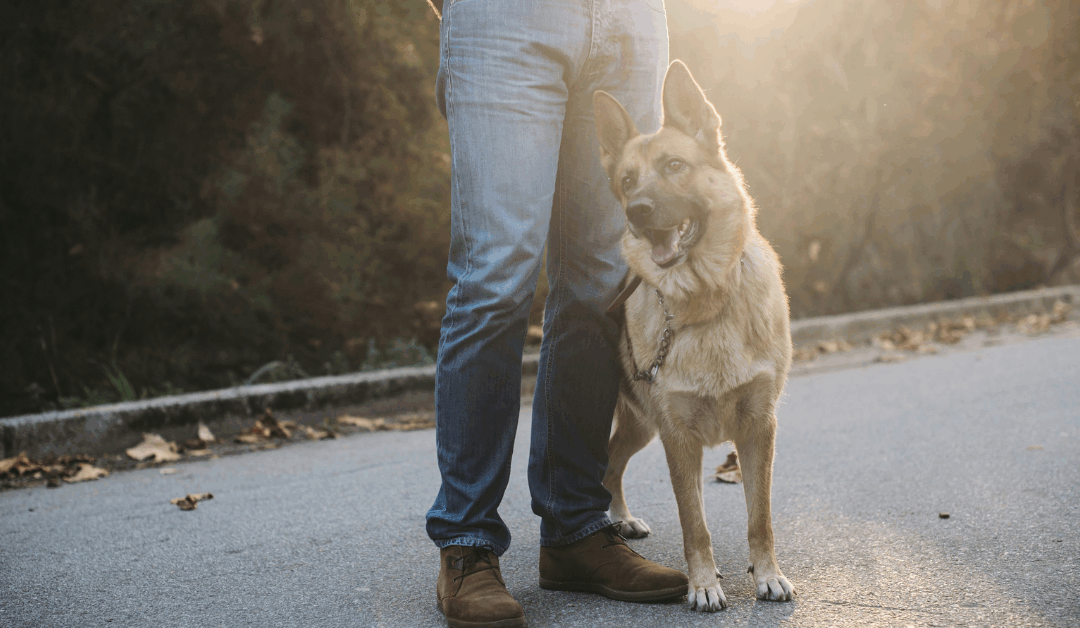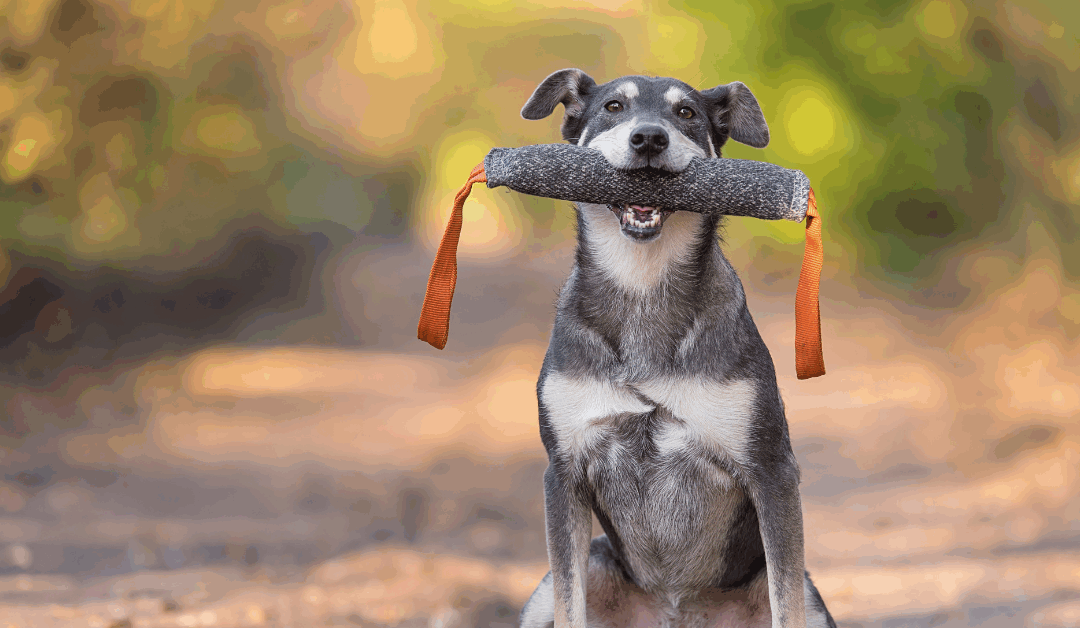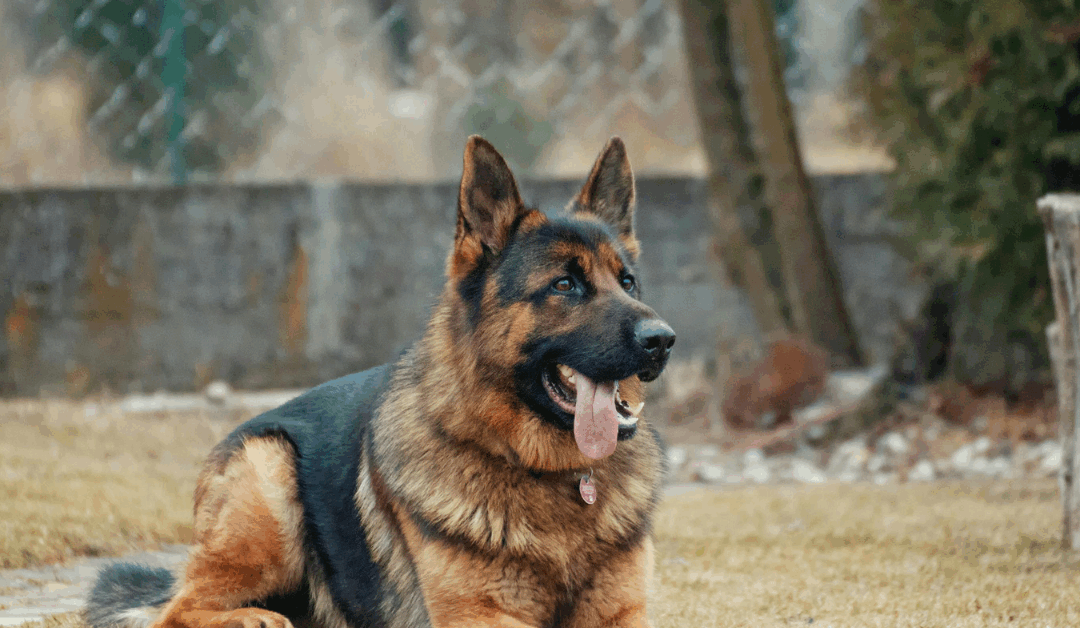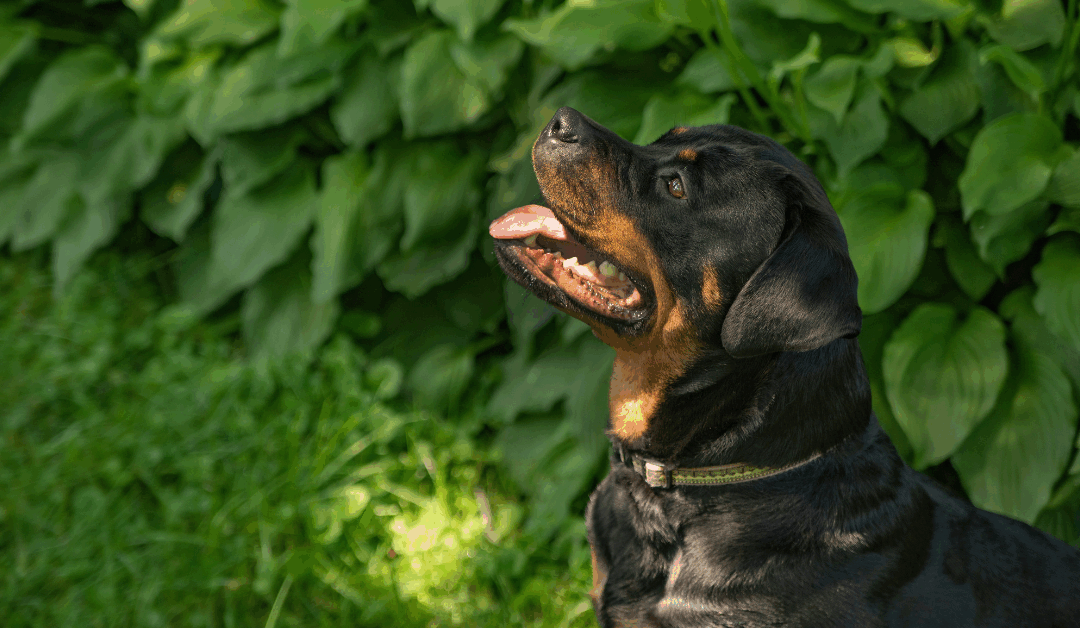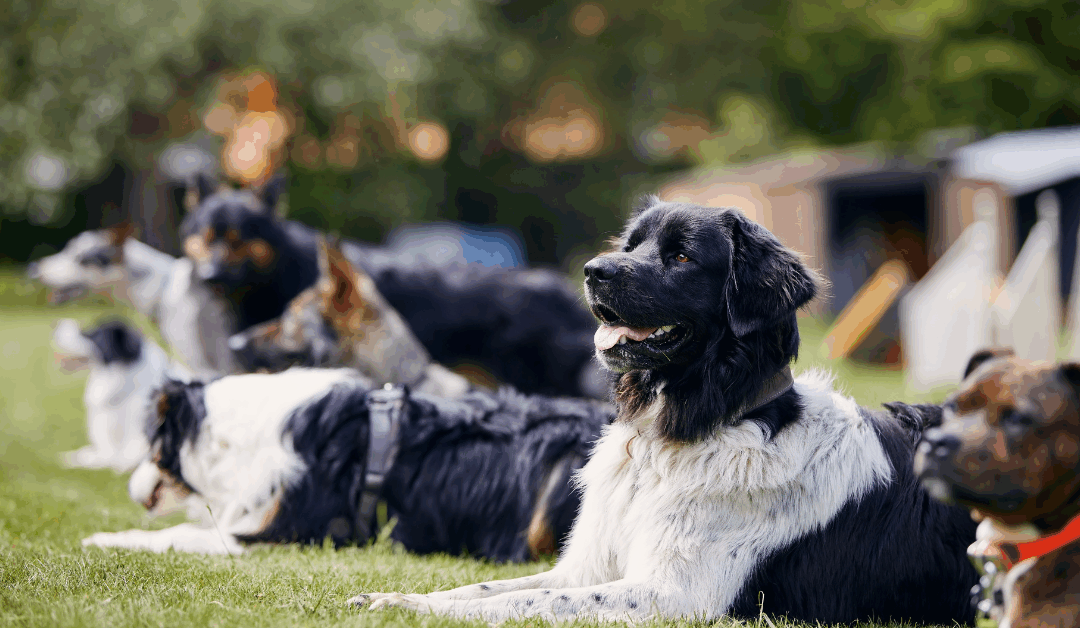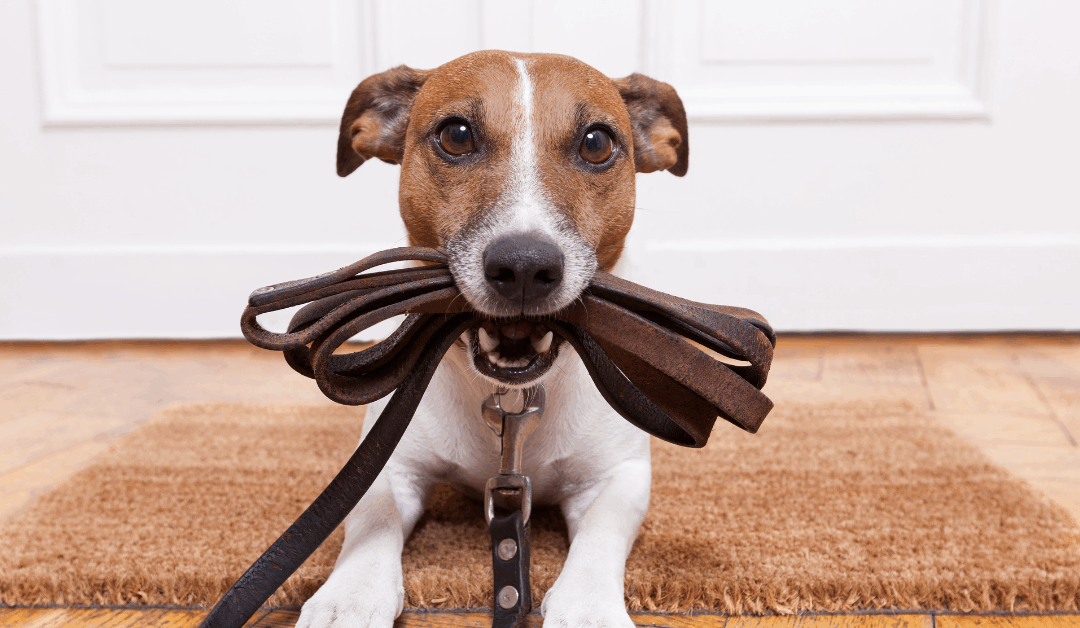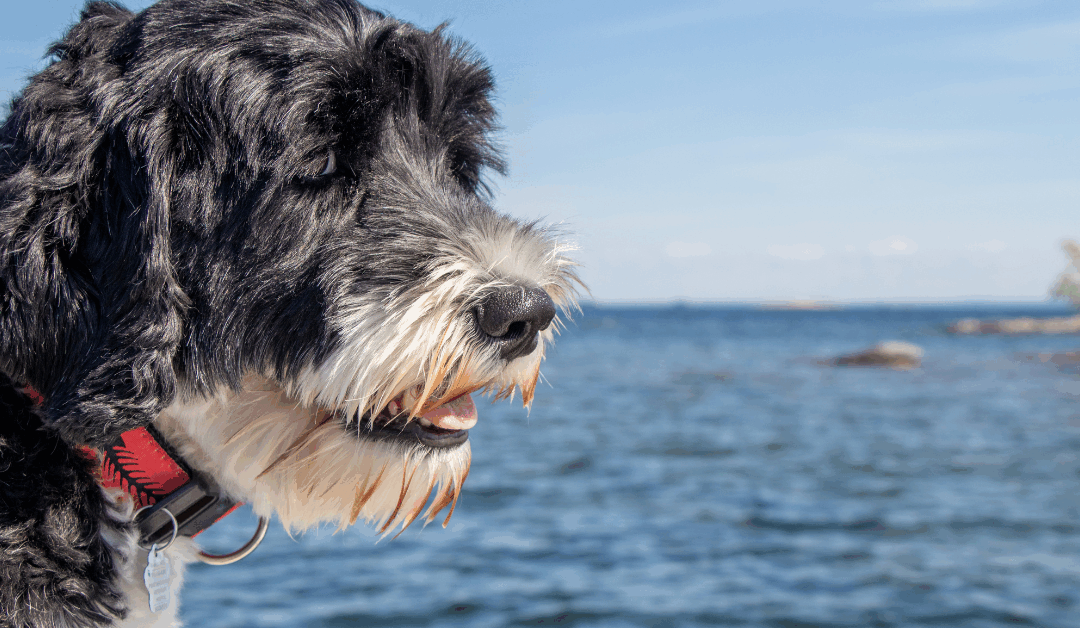You’re sitting on the couch after a long day when your furry companion bounds over and begins their daily ritual: licking your face, hands, and any exposed skin they can reach. While these doggy “kisses” can be endearing, you might wonder why your dog seems so determined to give you a thorough tongue bath every single day.
Now your thinking ‘why does my dog lick me so much?’
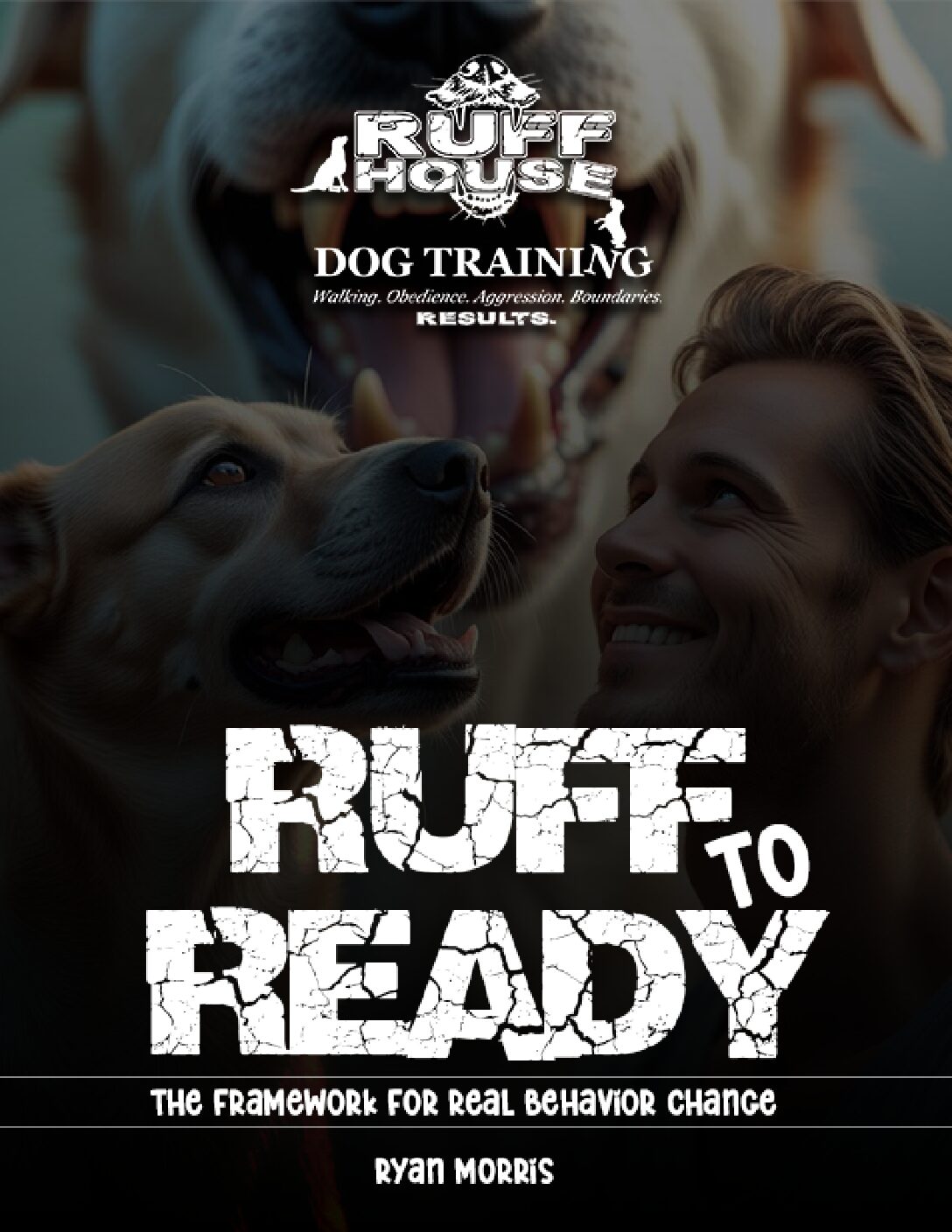
Unlock Real Behavior Change – Download Your Free Guide Now
"*" indicates required fields
Dog licking is one of the most common behaviors pet owners encounter, yet it’s also one of the most misunderstood. Some dogs are occasional lickers, while others seem to make it their full-time job. The reasons behind this behavior are more complex than simple affection, ranging from natural instincts to potential health concerns.
Understanding why your dog licks you excessively can help you determine whether this behavior is normal or if it requires attention. More importantly, it can strengthen the bond between you and your best friend by helping you respond appropriately to their communication. attempts.
The Science Behind Dog Licking Behavior
Before exploring specific reasons for excessive licking, it’s helpful to understand that licking serves multiple purposes in the canine world. Dogs use their mouths much like humans use their hands—to explore, communicate, and interact with their environment.
From birth, puppies experience licking as their mother’s primary way of cleaning and caring for them. The mother’s face becomes associated with comfort, safety, and nourishment. This early experience shapes how dogs view licking throughout their lives, making it a fundamental form of communication and bonding.
Not all dogs lick with the same frequency or intensity. Some breeds are naturally more “mouthy” than others, while individual personality traits play a significant role. Young dogs tend to lick more frequently as they explore their world and learn social cues from their human family members.
8 Common Reasons Why Your Dog Licks You Excessively
1. Showing Sign of Affection and Bonding
The most widely recognized reason for dog licking is affection. When your dog licks your face or hands, they’re often expressing love and strengthening their bond with you. This behavior mimics what they experienced as puppies when their mother would lick them as a sign of care and protection.
Dogs learn early that licking garners positive responses from humans. When you smile, laugh, or pet them in response to their licks, you’re reinforcing this behavior. Your dog associates licking with your happiness, making them more likely to continue this affectionate gesture.
2. Attention Seeking
Dogs are incredibly social animals who thrive on interaction with their human families. If your dog discovers that licking gets them attention—even negative attention—they may use this behavior as a reliable way to engage with you.
Attention-seeking licking often occurs when you’re busy, distracted, or haven’t interacted with your dog for a while. The dog learns that a few licks to your hand or face will reliably result in eye contact, verbal responses, or physical interaction. This type of licking can become problematic if it escalates to constantly licking whenever they want your focus.
3. You Simply Taste Good
Human skin contains salt from sweat, along with various scents and tastes that dogs find appealing. Your hands might carry traces of food, lotions, or other substances that make them particularly interesting to your dog’s sensitive taste buds.
Dogs have an incredible sense of smell—up to 100,000 times more sensitive than humans. They can detect subtle changes in your scent that might indicate what you’ve eaten, where you’ve been, or even your emotional state. Licking allows them to gather even more detailed information about these interesting smells and tastes.
4. Exploring Their Environment
Dogs explore the world through their mouths, and licking is a natural way for them to investigate new scents, textures, and tastes. When your dog licks you, they’re gathering information about your day, your health, and your emotional state.
This exploratory licking is especially common in young dogs who are still learning about their environment. As they mature, this behavior often decreases naturally, though some dogs maintain their investigative licking habits throughout their lives.
5. Stress and Anxiety Relief
Licking can serve as a self-soothing behavior for anxious dogs. When they feel stressed, worried, or overwhelmed, dogs groom and may engage in repetitive licking as a way to calm themselves. This is similar to how humans might bite their nails or fidget when nervous.
Dogs with separation anxiety often exhibit excessive licking behavior, particularly when their owners return home. The licking helps them process their emotions and reconnect with their human family members after a period of stress.
6. Boredom and Excess Energy
An understimulated dog may turn to licking as a way to occupy themselves and burn mental energy. Dogs need both physical exercise and mental stimulation to stay healthy and happy. Without adequate outlets for their energy, they may develop repetitive behaviors like excessive licking.
This type of licking often occurs during periods when the dog has nothing else to do, such as when owners are watching television or working from home. The behavior provides mental stimulation and can become a habit if not addressed.
7. Learned Behavior and Habit
Sometimes excessive licking simply becomes a learned habit. If licking has consistently resulted in positive outcomes for your dog—attention, treats, or affection—they may continue this behavior even when they don’t have a specific need or motivation.
Dogs are creatures of habit who thrive on routine. If licking has become part of their daily routine with you, they may continue this behavior automatically, without any underlying emotional or physical need driving it.
8. Medical Issues and Compulsive Disorders
In some cases, excessive licking can indicate underlying health problems. Dogs experiencing pain, nausea, or other physical discomfort may increase their licking behavior as a coping mechanism. Certain medications can also cause increased licking as a side effect.
Obsessive compulsive disorder can occur in dogs, manifesting as repetitive licking behaviors that seem impossible to interrupt. This condition requires professional veterinary assessment and treatment, as it can significantly impact the dog’s quality of life and well-being.
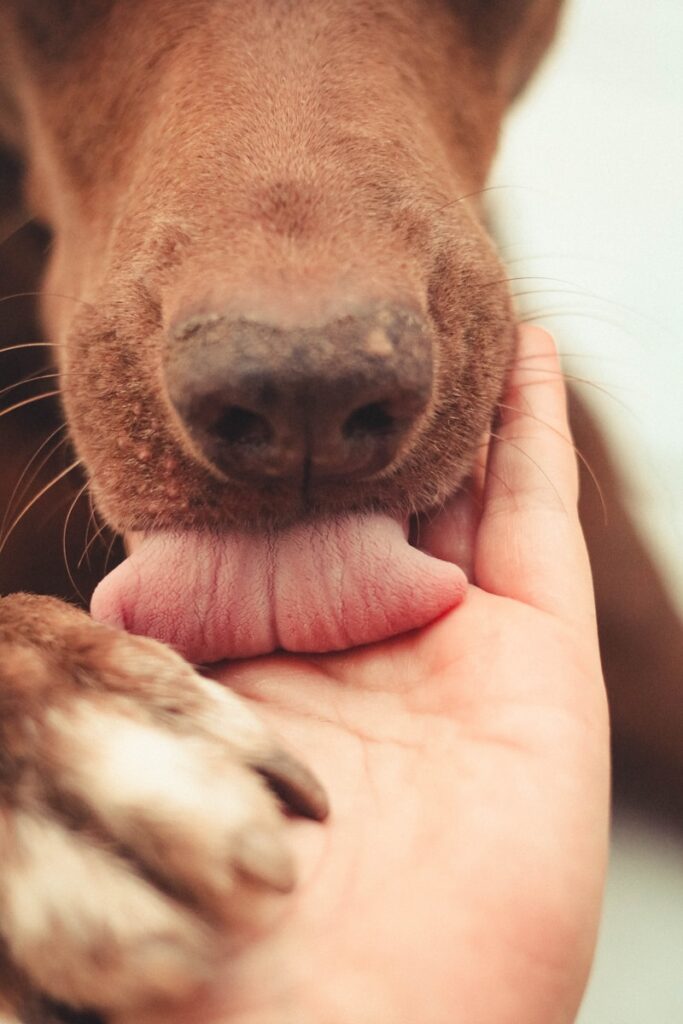
When Dog Licking Becomes a Problem
While most licking is harmless and even beneficial for the human-dog bond, excessive licking can become problematic. Signs that your dog’s licking may need attention include:
Constant, non-stop licking that interferes with normal activities or seems compulsive in nature. If your dog cannot be easily distracted from licking or returns to it immediately after being redirected, this may indicate an underlying issue.
Licking accompanied by other concerning symptoms such as changes in appetite, energy levels, or bathroom habits. These combinations can signal medical problems that require veterinary attention.
Aggressive or frantic licking that seems driven by anxiety or stress. If your dog appears distressed while licking or becomes agitated when prevented from licking, this may indicate an emotional issue requiring professional help/
Licking that causes skin irritation either to the dog (from excessive self-licking) or to humans (from constant moisture and friction). Prolonged licking can lead to skin problems for both parties involved.
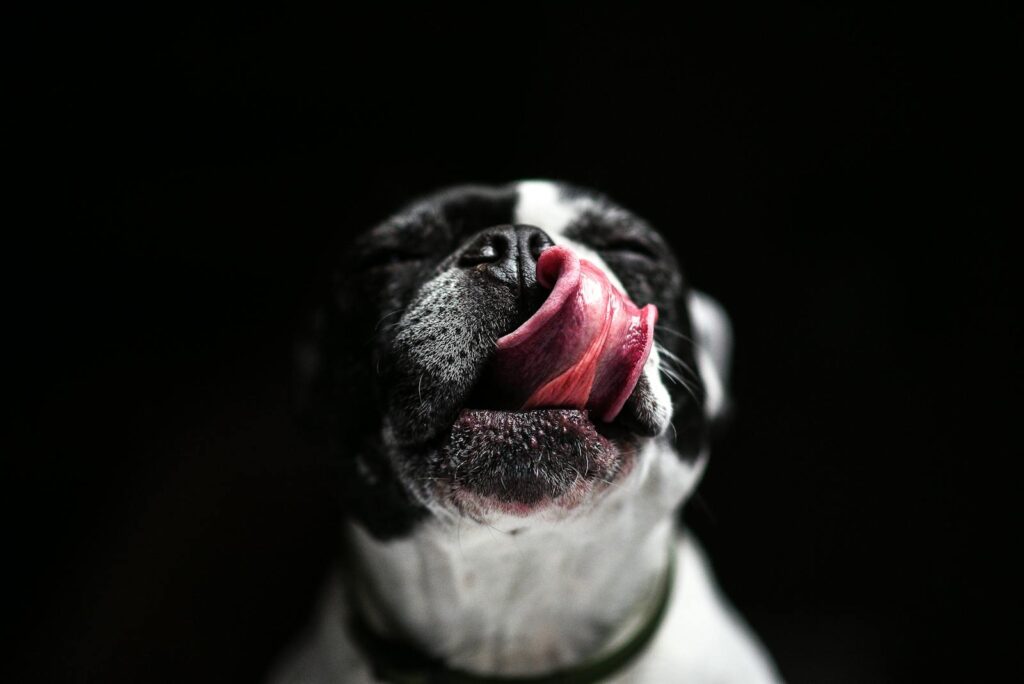
How to Manage Excessive Licking
If your dog’s licking has become problematic, several strategies can help reduce this behavior while maintaining your loving relationship.
Redirect the behavior by offering alternative activities when your dog begins licking. Provide a toy, initiate a training session, or have the dog engage in play to channel their energy and attention elsewhere.
Increase physical exercise and mental stimulation to address potential boredom or excess energy. A tired dog is often a well-behaved dog, and adequate stimulation can reduce many problematic behaviors.
Establish consistent responses to licking behavior. If you want to reduce licking, avoid giving attention when it occurs. Instead, ignore the behavior and reward your dog when they’re calm and not licking.
Consider trick training to give your dog alternative ways to interact with you and earn attention. Teaching commands like “sit,” “stay,” or “shake” provides structured interaction that doesn’t involve licking.
Create a calm environment for anxious dogs by maintaining consistent routines and providing safe spaces where they can retreat when feeling overwhelmed.
How Ruff House Dog Training Can Help with Non-Medical Excessive Licking
Excessive licking can sometimes be a behavioral issue rather than a medical one, and that’s where Ruff House Dog Training comes in. Our experienced trainers specialize in identifying the root causes of non-medical licking and providing practical, tailored solutions to address them. Whether the licking stems from anxiety, boredom, or a way of seeking attention, we offer positive reinforcement techniques and structured training plans to help redirect this behavior into more constructive outlets
By focusing on building trust, establishing clear boundaries, and encouraging alternative behaviors, Ruff House Dog Training can guide you and your dog toward a harmonious relationship free of unnecessary licking.
When to Consult Your Veterinarian About Problem Licking
While most licking is behavioral, certain situations warrant professional veterinary assessment. Schedule an appointment if you notice:
Sudden changes in your dog’s mouth licking behavior, especially if your dog begins licking excessively when they previously didn’t exhibit this behavior. Rapid behavioral changes can indicate medical issues requiring attention.
Licking accompanied by other symptoms such as changes in appetite, bathroom habits, energy levels, or overall demeanor. These combinations often point to underlying health problems.
Compulsive licking that your dog cannot control or stop, even when distracted or redirected. This may indicate obsessive compulsive disorder or other behavioral conditions requiring professional treatment.
Signs of physical discomfort or pain when your dog licks or when you try to prevent licking. This could indicate medical issues causing the behavior.
Products to Help Manage Excessive Licking
When dealing with excessive licking behavior in your dog’s health, certain products can provide relief and help address the underlying issues. Below are six safe and effective options designed to support your furry friend:
BingPet Adjustable Dog Cone: A dog-friendly e-collar alternative designed to prevent licking of wounds or hotspots and protect healing areas.
NaturVet Bitter Spray: This all-natural, non-toxic spray deters licking and chewing due to its bitter taste, without harming your dog. It’s ideal for protecting wounds, furniture, and other hotspots.
Hill’s Prescription Diet for Dermatitis & Skin Disorders: This veterinarian-recommended dog food addresses nutritional deficiencies related to excessive scratching and licking, promoting healthy skin and coat.
Vet’s Best Hot Spot Spray: This natural formula uses tea tree oil and aloe vera to provide quick relief for itchy or irritated skin. It’s safe for frequent use and can soothe specific areas your dog targets.
Zesty Paws Allergy Immune Supplement: These easy-to-feed chews are packed with ingredients like colostrum and probiotics that support your dog’s immune health and combat allergies, which are often the cause of excessive licking
ENZYME-Derived Dog Paw Balms: A paws-safe balm made from non-toxic, soothing ingredients like shea butter and coconut oil to treat dryness, cracking, or irritation that leads dogs to chew or lick their paws.
These products, along with guidance from your veterinarian, can make a significant difference in managing your dog’s licking behavior while ensuring their comfort and safety. Always choose options tailored to your pet’s specific needs for the best results.
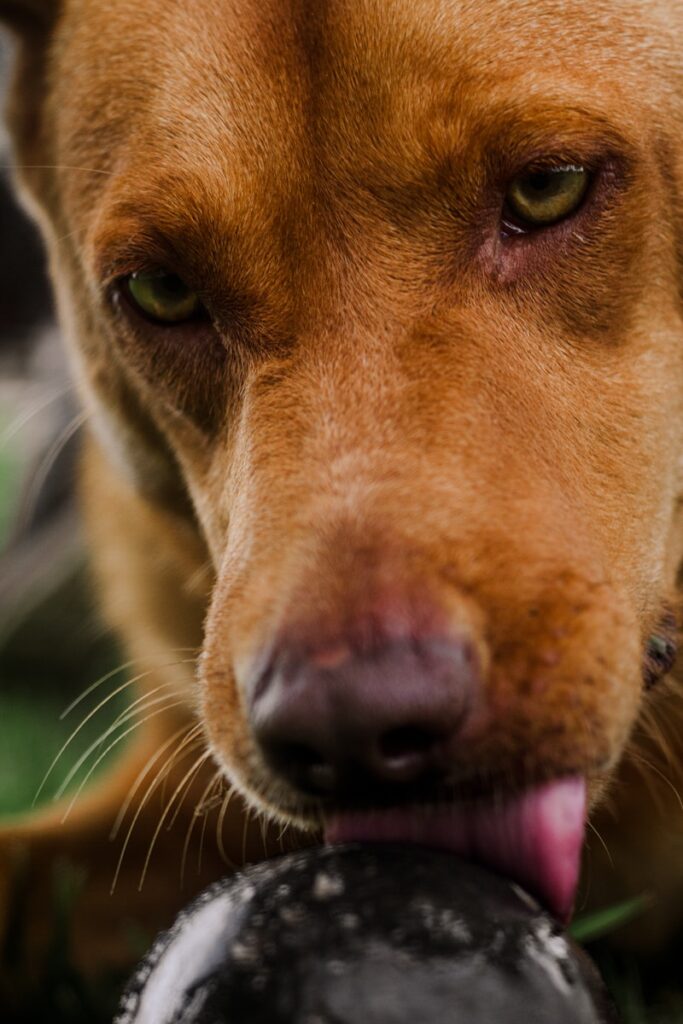
Understanding Your Dog’s Unique Communication Style | Why Does My Dog Lick Me So Much?
Every dog communicates differently, and understanding your individual pet’s motivations for licking will help you respond appropriately. Some dogs are naturally more affectionate and expressive, while others use licking primarily for attention or exploration.
Pay attention to when your dog licks most frequently. Does it happen when you come home, during quiet evening hours, or when they’re feeling anxious? Recognizing patterns can help you understand the underlying motivation and respond accordingly.
Remember that licking is just one way dogs communicate with their human families. By understanding and appropriately responding to this behavior, you can strengthen your bond while ensuring both you and your dog remain comfortable and happy.
The relationship between humans and dogs is built on mutual understanding and respect. When your dog licks you, they’re trying to communicate something important—whether it’s love, a need for attention, or simply curiosity about your interesting human scent. By learning to interpret these signals and responding appropriately, you can enjoy a deeper, more meaningful relationship with your canine companion.


